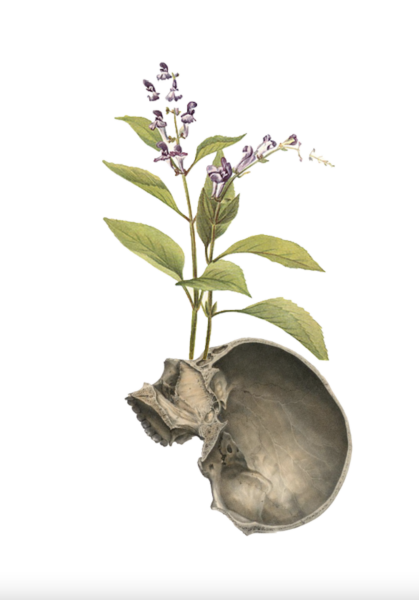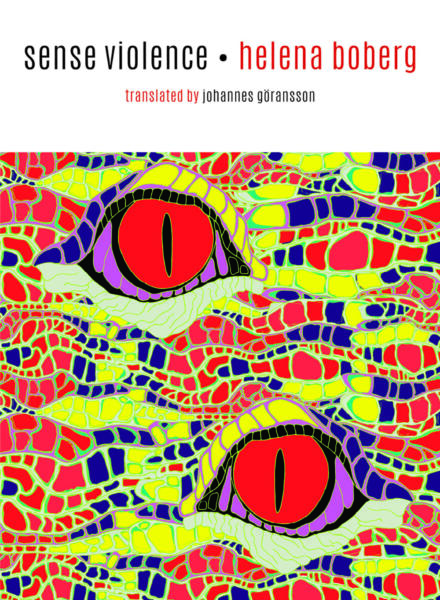Sense Violence, particularly the titular poem, moves through days. It has a beginning, middle, and end of “Summer” as a season. It gets hot, sticky, and uncomfortable. Flowers are blooming and people are stripped to their skin in the heat of the sweating sun. It explores the vitality of femme bodies, perverts them with language like gap and slit and cut. At the same time exalts them as the reproductive structures of angiosperms.
In one sense, this move is pretty cliché in the symbolic sense, since literature makes women out of flowers… However, I’m thinking about this etymology in Anne Carson’s essay, “Variations on the Right to Remain Silent”:
“Cliché is a French borrowing, past participle of the verb clicher, a term from printing meaning “to make a stereotype from a relief printing surface.” It has been assumed into English unchanged… partly because the word has imitative origins (it is supposed to mimic the sound of the printer’s die striking the metal) that make it untranslatable” (1).
The cliché, looking forward, is a re-print. I love printmaking because every copy of a work you print is subject to slight variations in the outcome. Effects that occur due to a number of causes—the amount of ink, the viscosity of ink, pressure, the slight draft of the door opening, moving the paper so slightly that it goes unnoticed. In this sense, Boberg takes the cliché of flowers and sex and catastrophizes it—violates it—makes it violent. Boberg uses violence as an image to subvert and destroy the image. This is why, to me, the flower/sex/body image doesn’t sit as a cliché in my reading. It is not sensual, consensual, or beautifully romantic—but sometimes the poem does lapse into the gentile and sensitive. One of my favorite lines in the poem, “I want to return to everything/rain simple things hatred/ open up to the marvelous” (38). In these lines, the hatred and the seeming cliché image of rain as sorrow, open up to beauty and perfection.
Carson also uses this phrase, “the rage against cliché,” which is to say that the rage is a response to cliché, where the rage descends into catastrophe, in which language or art disembodies itself and finds its body outside of itself. Like Bacon said in her essay, “I want to paint the scream not the horror” (Carson 3). The horror is the cliche. The flowers and the sexualization are the clichés.
The scream is the body outside of itself looking in from another room, it is the apostrophe in these poems, the collective you [we] given agency and then having it taken— the sound/the voice/ the translation of experience that quickly falls into silence —into itself away from itself. Boberg writes, “You observe/ with eyes / like mine shafts // Transform me / to a rage” (48). The eyes on the speaker, witnessing the cliché, take the body and moves it to intense feeling, the “poetic” (‘rage’ in literary terms according to Oxford Languages [Google] lol).
The pronouns in Sense Violence have a relationship to ownership or possession —“Steal from silence/ until I own it // Then speak / Speak similarly” (49) and “Your child will be mine/ I will speak through its mouth” (58). The sound, like the scream of horror in Bacon’s art, is the “poetic” and the cliché is the body. Anne Carson would say that people are cliché, and I would agree since we are all merely reproductions of earlier versions of ourselves, and at the more physiological levels, reproductions of our parents. So, the sound or the silence in the body is where the poetic prophecies exist, “Silence is not the absence of something/ Everything shouts at everything else” (68).
The desire for possession in this poetry book is one that doesn’t desire the body as a sensual pursuit but one that desires the silence/sound that the body can create. This is the erotic experience of Sense Violence, “She versifies sanguinely/ pushes her verbiage into my mouth” (59). This silence/sound is also the most unattainable, un-possessable thing in life—we cannot capture the living essence of a word when it is spoken—it is fleeting, it is outside of the body. (We can capture it on paper, or tape! and still, that is only a reproduction of itself.)

“Skullcap” (2019), silkscreen 12 x 18 by Valerie Virginia Vargas
Boberg takes the movements of sound/silence inside the body of the speaker in these pages in an attempt to keep. She writes, “As a word/ she no longer/ exists/ outside me” (24), “The sounds of the street, people’s/ movements/ take place in me” (46), “And I wanted to reach you but you were me” (59).
Perhaps the body of this poetry collection is not a body at all, but an entire sound, a communal moan where “Speech opens in all directions not knowing where it comes from/ or where it is heading” (66). The catastrophe, the tragic, the blissful, and the gentleness all the pronouns in the poem, and its readers, the experience is that “Once you have entered language you cannot get out” (69). We are now part of the collective silence and scream of Boberg’s speaker.
Valerie Virginia Vargas is a Venezuelan-American poet and printmaker from South Florida. She is an MFA candidate in poetry at the University of Notre Dame. Her work can be found in Jellyfish Magazine, [PANK] Magazine, and TYPO Magazine. She is forthcoming in Waterproof, book two of The Miami Trilogy published by Jai-Alai Books.
